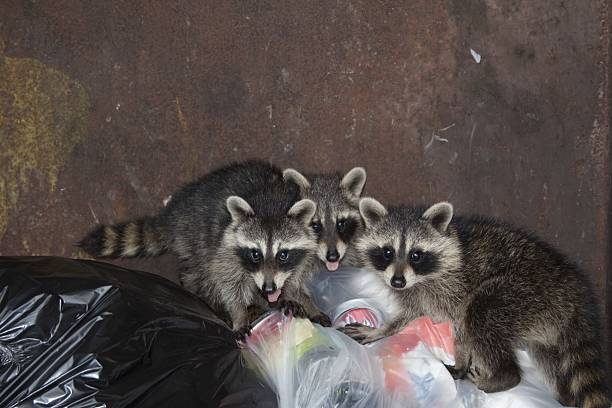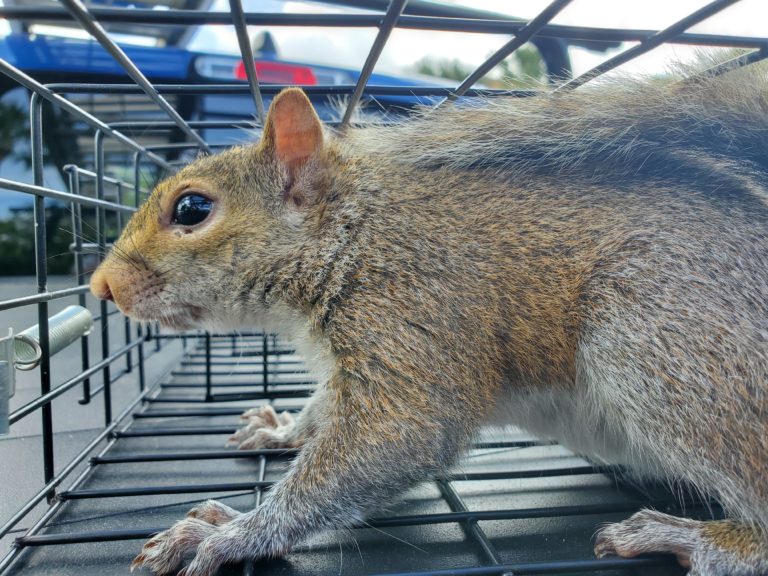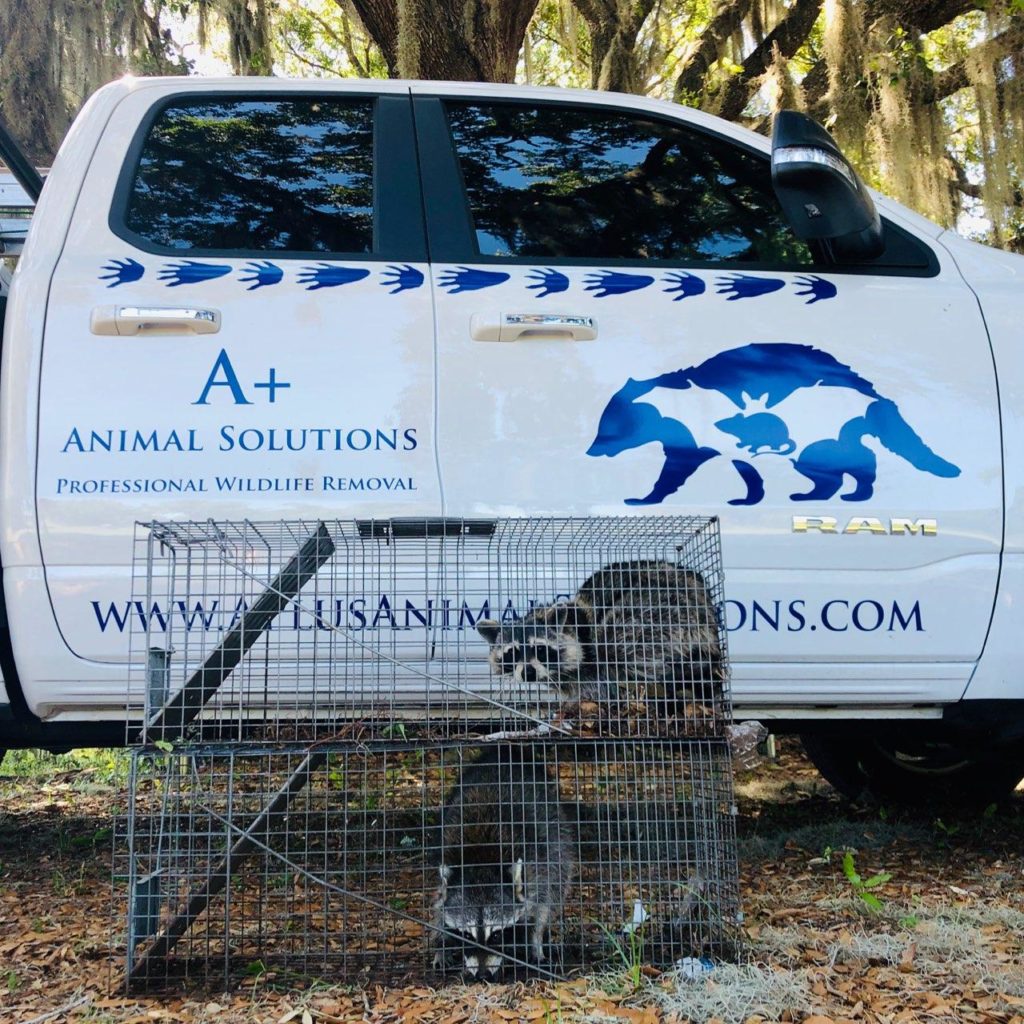GET RID OF OPOSSUM ONCE AND FOR ALL
Opossum Removal | Fast & Accurate Wildlife Control
Humane Wildlife Removal and exterminator in Flordia
Opossums are the only marsupials that live in North America. As a marsupial, opossums develop their young in an exterior pouch like kangaroos instead of inside their womb. Although opossums have a scary look, they are docile creatures that are active at night. But don’t be deceived by their tractability. They are rather industrious with great survivor instincts. As omnivores, they are scavengers, devouring a wide variety of food – including insects, worms, snails, vegetables, fruits, garbage, and pet food – with gusto. Because of the copious supply of diverse food in urban neighborhoods, opossums have adapted to forage in human settlements.
Despite their ecological benefits in terms of pest and rodent control, they are classified as a pest species due to the nuisance they cause for humans. In this article, we’ll discuss these problems and how to get rid of them.




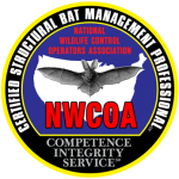





Problems Caused by Opossums
Some of the common problems caused by opossums include:
- Opossum living in the attic: Female opossums like to build their nest in attics because of the
warmth and security it provides her joeys (babies). - Opossum living under the house or deck.
- Opossum playing dead on your property.
- Opossum stealing pet food or birdseed.
- Potential infection from unhealthy opossums.
Our Opossum Removal Process
There are three basic steps in opossum removal. They are inspection, treatment and decontamination, and prevention.
Inspection
Opossums are known to make hissing and screeching noises. They will also scratch while looking for food. Overturned trash cans, foul smells, scratches on garbage cans, nesting materials in your attic or basement can be indicative of an opossum infestation. However, there is no way to conclusively tell until a full inspection is carried out. A full inspection involves the following steps.
1)A full survey of your property:
This involves looking out for telling signs of an opossum infestation – tampered trash cans, scratches, and droppings. A hand glove must be worn when touching their remnants to avoid the risk of infection.
2)A full survey of your property:
Opossums don’t build nesting areas themselves. Instead, they occupy hollow spaces abandoned by other animals. Therefore, look at large holes and crevices near your house. Also, if you hear noises in your house, you should check your attic and basement.
3)Bait the opossum:
By taking advantage of their insatiable appetite, you can strategically place food to lure opossums to where you can see them.
4)Develop a treatment plan:
A successful removal operation requires adequate knowledge of opossum behavior. Also, opossum capture and relocation are subject to state laws. Therefore, it is advisable to involve a licensed opossum removal service to ensure a legal and successful operation.
Treatment and Decontamination
Trapping is the most effective way to remove opossums. However, success can only be guaranteed if done right. Some of the factors to consider when trapping includes:
- Using the right trap
- Selecting the appropriate area
- Using the right bait. Do not use meat-based baits because they can attract other animals like stray cats. Instead, use bait like fruits or dog food.
- Check the trap daily to ensure that the opossum is relocated on time once it is captured.
After successful exclusion, areas infected with their remnants – feces, urine, hairs and so on – must be decontaminated. This is to prevent it from attracting cockroaches and other insects. Also, this will prevent molds – that potentially cause diseases like Salmonella or Leptospirosis – from growing.
Prevention
Once opossums have been excluded, the following steps should be taken to prevent their re-entry.
1)Eliminate all entry points:
This involves sealing off all potential entry points for opossums into your home. Ensure there are no holes in the roof or a nearby tree branch bridging to your attic that can
serve as an entry point.
2)Remove attractants:
This involves eliminating the source of food or shelter in your property. Properly seal and dispose of trash. Ensure that pet food is not left outside. Clear all hiding spots from
your property.
3)Repellents:
Although repellents are not very effective, using them with other precautions will help exclude opossums from your property. Motion-activated light and sprinklers will startle opossums when they creep into your yard and will discourage them from moving closer. Also, sonic repellents emitting high-frequency noises can cause discomfort to opossums, sending them away. Note that sonic repellents should not be used if you have pets because it can cause discomfort for them too.
4)Fencing:
Although fencing can be expensive, if done right, it is a great way to prevent opossums from entering your property.
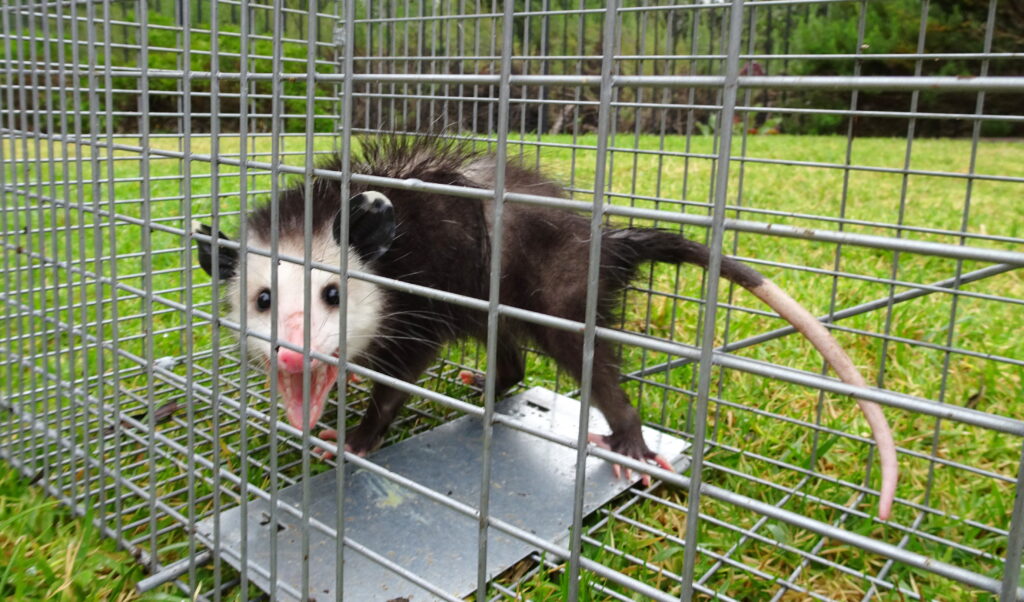

Opossum Removal from Attic
As urban sprawl continues to occur, more and more nuisance wildlife is becoming more common in urban areas. When you find a opossum in your attic visit at to learn how to deal with visit at wildlifeanimalcontrol.com. The opossum is no exception, as it loves being able to find easy food sources that humans leave for it. Opossums can be a very problematic animal when they are around humans, and especially when they get into attics. Continue reading to learn more about opossums and how you can get rid of them for good.
What Damage Do Opossums Cause in Attics?
Opossums are not a good animal to be located around humans or their homes. The biggest, most serious problem with opossums is their disease spreading capabilities. Tularemia, tuberculosis, leptospirosis, and many other nasty diseases are all commonly carried by opossums in a wide variety of areas. These diseases can all be very harmful to human health, potentially putting people in the hospital. Opossums spread their diseases in a number of ways. Bites and scratches are the simplest way to get the illnesses opossums are carrying. Coming into contact with opossum feces and urine is another surefire way to wind up with some kind of infection. Finally, any water the infected opossum drank from and any hair or saliva that came from the opossum can also spread illness.
In addition to their disease spreading potential, opossums can also cause damage to homes, and particularly the attics of homes. Once they get into an attic, they will really tear the place up. Insulation will be torn up and smashed down, ruining its insulative properties that save you money through energy efficiency. In addition, the opossum may even create large entry and exit holes, which will give future pests more places to easily make their way into your home.
How Do I Prevent Opossums?
If you are looking to prevent opossums, one of the best ways to do it is to focus on reducing the attractiveness of your yard. The best way to do this is to eliminate easy food sources. For example, any garbage or pet food lying around should be cleaned up and secured away from the prying hands of nuisance wildlife. Another excellent way to do this is to find any and all fallen fruits or vegetables laying around your property and cleaning those up. Finally, focus on decluttering your yard. Keep all grass and weeds trimmed. Clean up any piles of wood or stone you have laying around. Just be sure to clean up all debris around your property in general, and you should be good to go.
How Can I Remove Opossums from my Attic?
As nice as it would be to be able to easily remove opossums on your own, this is rarely an easy task. The problem lies in that the invading opossum in your attic is very likely a mother who has recently had her young in your attic. You cannot just remove the mother opossum, as the babies will die slowly and smell up your home. Calling a professional wildlife removal company is generally the recommended next step, as the company will remove all baby opossums from your attic, as well as the mother. If you are completely sure that the opossum does not have babies, however, you can attempt to remove the opossum on your own with a baited cage trap. This is an excellent humane choice that will keep you and your family safe from the opossum.
Why Hire A+ Animal Solutions?
At A+ Animal Solutions, we have decades of experience in removing opossums, as well as many other nuisance animals, from homes and businesses. We do not just remove wildlife, but we also perform many other services that will keep future critters out! If you are located in Volusia County, FL or Brevard County, FL, A+ Animal Solutions can help you take care of any nuisance wildlife-related problems you may have. Give us a call here at A+ Animal Solutions, as we would love to help you out as soon as possible!
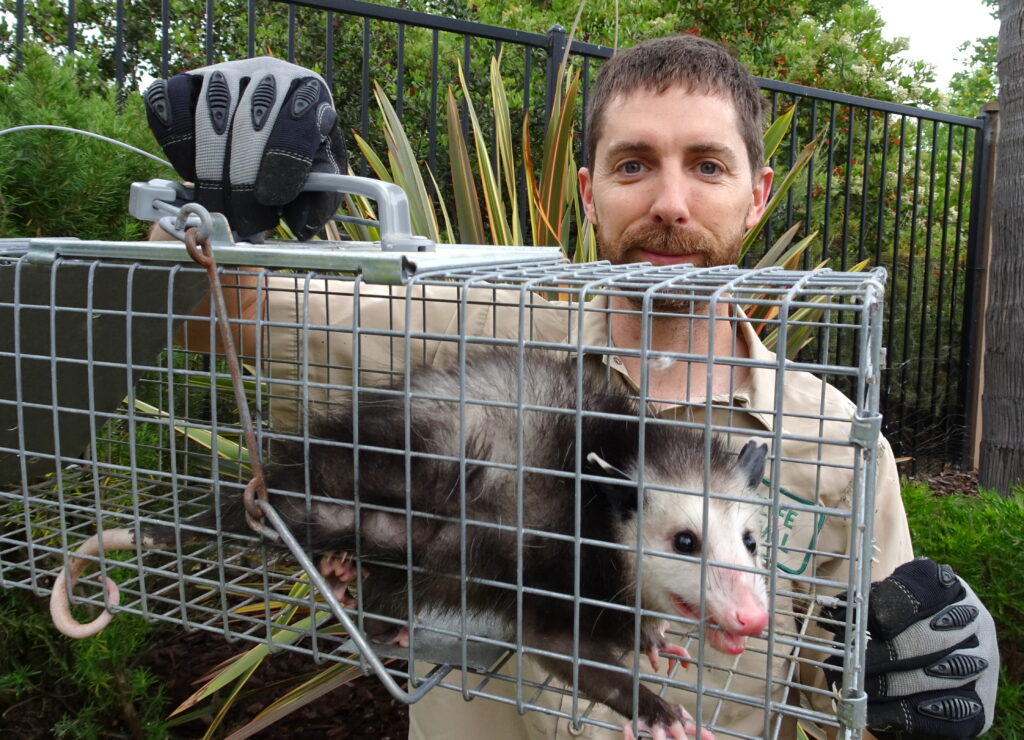

How to Remove Possums From Under The Deck
One common issue we’re often called on to resolve is that the caller has discovered they’ve got an opossum stuck underneath their deck or front porch. We, at A+ Animal Solutions, have seen the above situation time and again and have, in our years of experience, racked up quite a few tips for getting rid of that opossum safely, and without bringing it any harm.
In this article, we’re going to be sharing those tips and tricks with you, in order to ensure a safe and efficient opossum removal and the swift restoration of your property.
First things first, why do you need to remove the opossum? And how did it get there?
We at A+ Animal Solutions have found that it’s always worthwhile figuring out why and how an animal got to be on your property. That way, you’ll understand what attracted it, and even more importantly, how to avoid future invasions.
Opossums are large marsupials who live most of their lives as scavengers for food. Well, that’s true about most wildlife intruders, but few are as omnivorous and opportunistic as opossums. They are apt to eat just about anything, from garbage to leftovers, even to insects, so this is why they’re so attracted to your property – it’s opossum paradise.
And living under your deck is just about ideal, as it offers them protection from you, as well as other wild predators that would constitute a concern if they were out in the wild.
But why should their presence bother you? Well, if startled or cornered, opossums have been known to bite both humans and pets. And opossum bites are nothing to joke about, since they’ve literally got jaws packed with sharp teeth, and are known for carrying a wide range of diseases. So in other words, you want them off your property as quickly as possible.
So how can you get rid of opossums?
One of the smartest methods of getting rid of a possum from under your deck is by scaring it away. It’s not uncommon for homeowners to use loud sounds, such as music over the speakers, or radio turned up to the max, to ward off unwanted wildlife. This may well be an efficient way to remove possums from underneath your home, and it’s definitely worth trying out.
Another method you might use to scare possums away is by the use of pinwheels, which have been known to scare opossums, as well as several types of birds. Remember, if the opossum thinks there’s a danger, they’ll leave your property well alone.
While some homeowners will advise that you use your pet to scare off the opossum under your home, we at A+ Animal Solutions would strongly advise against that. As seen above, possums are known for their sharp teeth and their proclivity to bite, if they feel at all threatened. This is why they can pose a serious threat to your pets, and so it might not be a good idea to send your pet to wheedle out the opossum.
And then, of course, there’s trapping. Trapping is an excellent and highly effective method for getting unwanted wildlife out from under your home or deck. You can, of course, purchase the cage yourself and attempt trapping the animal on your own.
Possums are among the easiest animals to trap, as they are notorious scavengers. This makes it easy for you, the homeowner, to bait the cage and attract them inside.
Once trapped, we strongly suggest that you relocate the animal rather than kill it, as that is a highly inhumane and largely unnecessary method of removal.
Alternatively, you could call a professional wildlife removal company, like A+ Animal Solutions, to take care of the trapping for you. The main advantage here is that we are qualified professionals with plenty of experience doing this. Not only that, but we will also advise you on future prevention methods, to avoid invasions in the near future, and help you with restoring your property.
Remember, prevention is as important as the removal process itself, otherwise you’ll have the exact same problem in a few weeks’ time, and we’re sure you don’t want that!
How to Keep Opossums Out of Your Garbage Can
Opossums are one of the most common urban animals you’ll come across, and that’s for good reason. These creatures are incredibly social and they’re not afraid to come by humans. In addition to that, we tend to have messy habits that leave more than enough good food for the little omnivores to come across and eat.
Unfortunately for us, opossums tend to push into habits, meaning that a few leftovers outside or a garbage can left open for a few days could mean opossums checking by every day or so. Although that might not seem like the worst thing, it can quickly mean other animals arrive, more opossums join, or they start fighting for food. It’s not fun – and, as such, how do you keep opossums out of your garbage can?
Close and Lock the Garbage Can
Most of the time, opossums simply find an open garbage can and hop inside. When it comes to free food, opossums will take virtually anything they can smell and they’ll gladly take any food that doesn’t require work.
Unfortunately for you, they’ll also take food that does require work. If you don’t lock your garbage can and an opossum can easily squeeze by or open the top, then climb around inside. Opossums are surprisingly good at opening things, and garbage cans are no exception. Fortunately, however, that means that a lock or even a bungee cord on the top of the can, can put an end to their eating.
If you manage to lock opossums out of your can quickly enough, then they’ll likely stop coming to it and, well, obviously be less likely to be attracted to the garbage can.
Buy a New Can
Nonetheless, locks and closing garbage cans isn’t a foolproof method. Opossums can chew through ropes or even break poor locks if they’re stubborn enough. Plus, if the smell of food continues to flow from your trash can, then they’ll continue to come back every night in hopes of you slipping up at one point.
Fortunately, though, you might be able to stop the entire problem with a metal trash can. Metal trash cans are much better at keeping aromas and stuff inside, while obviously keeping opossums out. They’re heavier, less likely to be pushed over, much harder to break into, and can even be strong enough without any extras to stop opossums from breaking into your garbage can.
Trapping (and Cleaning)
When that doesn’t work and locks don’t work either, then it’s time to look into removal. While you can set up traps yourself to cage and release opossums elsewhere, local regulations and the little creatures’ stubbornness could mean that this method might be difficult too. Fortunately, however, you can call local animal control or a local wildlife company to come and remove them.
Not only will this stop the obvious problem of the opossums being in your trash can, but it will also work towards stopping future problems that might occur. Whether that’s in opossums invading your attic, crawling inside your home, or even attacking your pets, they’re all much less likely if the animals are effectively and safely relocated somewhere else.
Also, well, you can clean up outside; removing things that smell of trash or food give less incentive for the opossums to go out of their way to visit your garbage cans, and picking up attractants can help keep them away from your property in general. Removing cover removes any incentive to sleep or stay nearby, removing food gets rid of any incentive for them to eat nearby, and removing pooling water leaves no reason for them to stay behind to drink.
CALL NOW
GET FAST QUOTE



